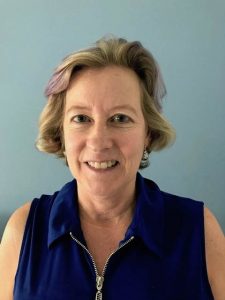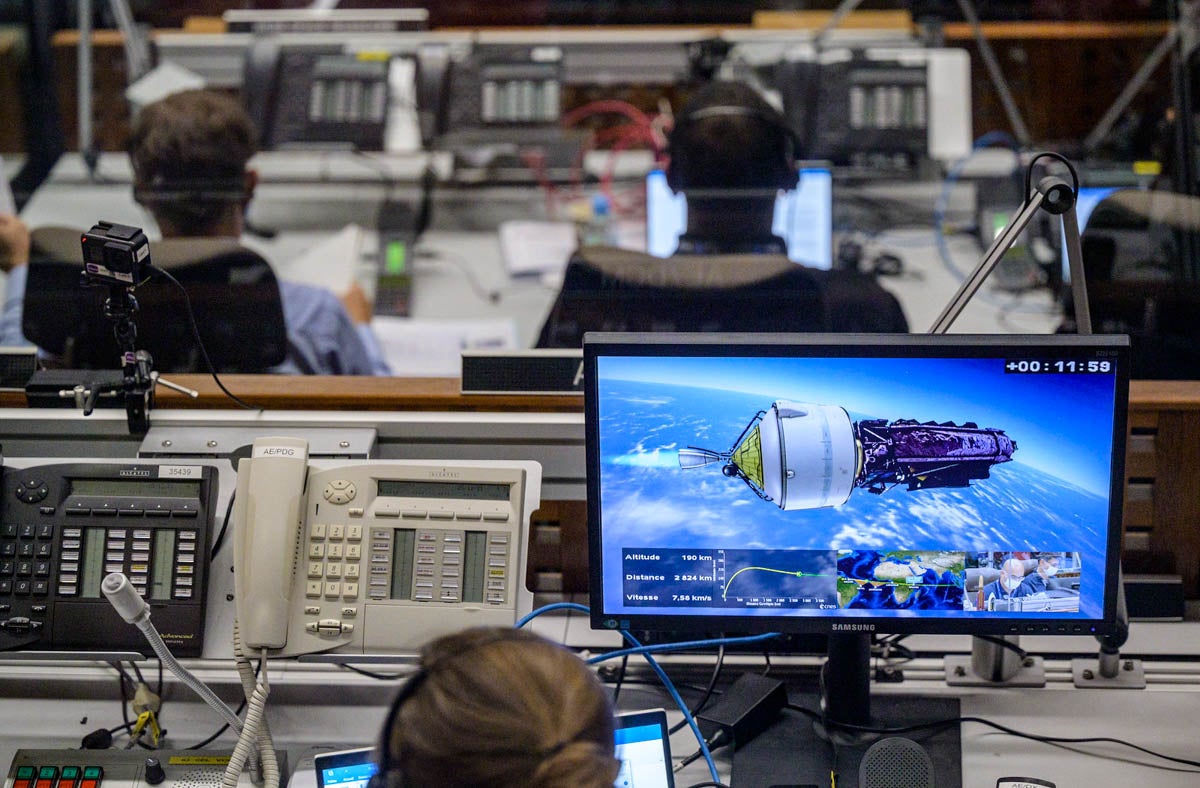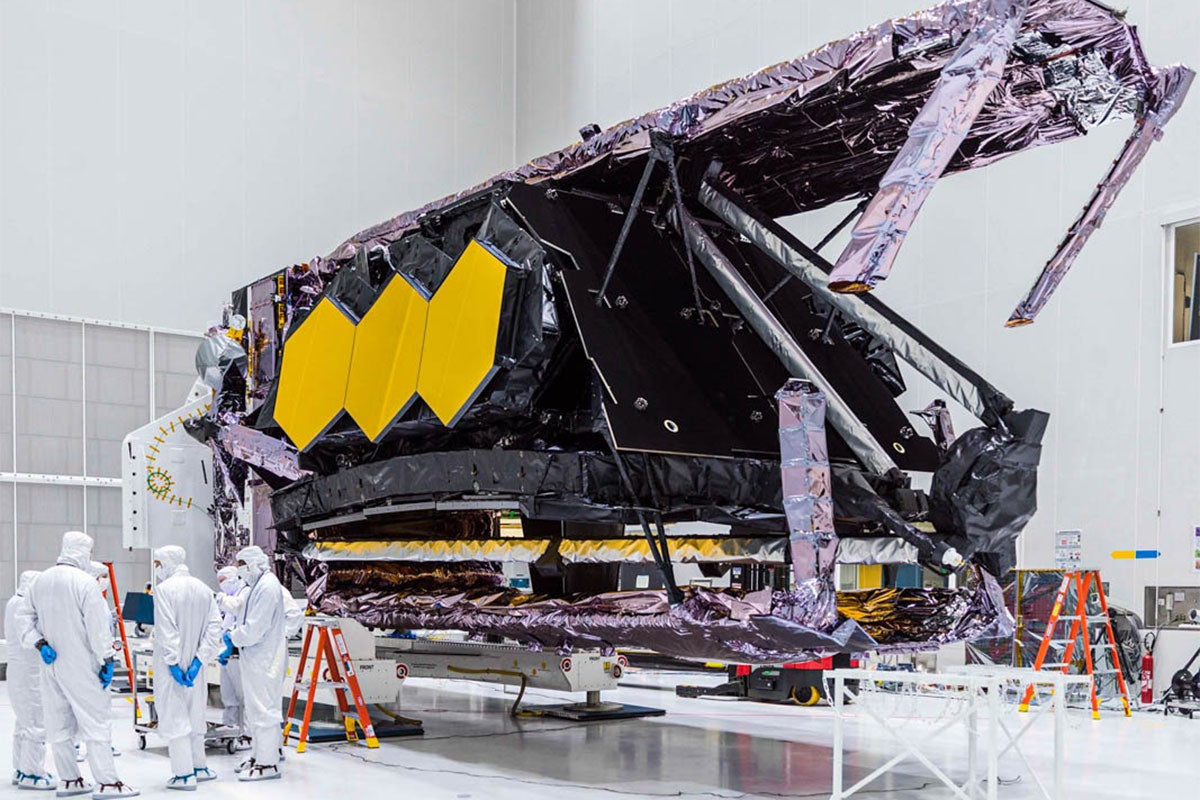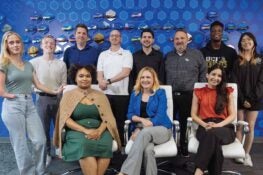Nearly a month after its launch on Christmas 2021, the James Webb Space Telescope reached its destination 1 million miles from Earth Monday. The observatory will provide insight into some of the earliest astronomical events in the universe.

Named after the administrator of NASA from 1961-1968, the James Webb Space Telescope orbits the sun at a gravitationally stable point in space and is intended to see objects 100 times fainter than those detected by the Hubble Telescope, which orbits Earth. This heightened sensitivity and resolution will allow scientists and researchers to observe distant objects in space and time, such as the first stars and formation of the first galaxies. From design to deployment, the Webb Telescope has taken 20 years and about $9.6 billion to produce — and since 2017, Jeanne Davis ’82 ’04MS has served as the program manager at NASA Headquarters.
“Once we’ve analyzed the science from Webb I’ll look at it with pride that I actually had something to do with it,” Davis says. “There were thousands of folks who worked on the James Webb Telescope, but I’m proud to be one member of this incredible team.”
She is the associate director of the Astrophysics Division, as well as the program manager for Astrophysics Strategic Missions at the Science Missions Directorate (SMD) based in Washington D.C.Prior to starting at the SMD, Jeanne worked at Kennedy Space Center and Cape Canaveral Air Force Station with NASA and the Air Force in various roles since 1988.
Here she shares the importance of teamwork, how UCF has prepared her current roles with NASA and the challenges of working on the James Webb Space Telescope.
ND: You earned a bachelor’s in molecular biology from UCF and worked in industry before coming back to earn a master’s in industrial engineering with a focus in management systems. How did you know shifting careers was right for you?
JD: Growing up, I loved science and math, especially biological sciences. Through a couple of opportunities with the labs at UCF, I did try to do some research, but I knew that wasn’t my passion. (But) after I graduated with my undergraduate degree, my jobs early in my career involved a lot of lab work, and I found that can be somewhat isolating. By working in the lab, I realized I like a lot of interactions with people and with groups. I’m more of a hands-on, figuring out problems and how to build something from design to development person.
Though I still enjoy biological sciences and my undergraduate education really has served me well, I really do enjoy systems engineering type work — and my master’s degree has served me well on that, too.
I always describe my career as not a single path, but a lot of zigs and zags and as doors open — and NASA has opened a lot of doors for me to take a chance and step out of my comfort zone to grow. I’ve been through many levels of my career and am now at a program and directorate level type of management (where) I understand managing people and budgets at a high level.
“Though I still enjoy biological sciences and my undergraduate education [at UCF] really has served me well, I really do enjoy systems engineering type work — and my master’s degree [from UCF] has served me well on that, too.” — Jeanne Davis ’82 ’04MS
ND: In your role as associate director of the Astrophysics Division, as well as the program manager for Astrophysics Strategic Missions, what are your responsibilities?
JD: In my current role I have a lot of meetings. Of course, now with [the pandemic and working with more virtual methods] there’re even more. But a lot of it is taking a strategic look at things where we want to go, especially when it comes to what we call large strategic missions within astrophysics. We have missions, just like the James Webb Space Telescope, that are going to be on the cutting edge of science and rewrite what we understand about our universe. So (we’re working) from the standpoint of where do we want to go with these great observatories? What’s the next science that we want to do? What are the things that we need to start to think about to figure out what kind of architecture we need to get that science?
As the Webb Telescope becomes operational in the next five to six months, I’ll still have programmatic responsibility of that as well. We also have another large strategic mission called the Nancy Grace Roman Space Telescope, (which is scheduled to launch no later than May 2027 to contribute to the science of dark energy, exoplanets and infrared astrophysics.) It’s in the development phase, meaning the designs are being finalized, major procurements have taken place and some of the space hardware is being manufactured. So a lot of what I do also as a program manager for that space telescope is to ensure that the project has what it needs if they’re supplying what they’re supposed to on time.
ND: How have your studies at UCF helped prepare your current roles?
JD: When I was in my master’s program at UCF there were a couple classes that directly related to my work. Those courses started me thinking in a systems kind of way. One was a project management class that was a really good introduction to the area.
Also, a lot of my classes — regardless of what the subject was, especially at the master’s level — required me to work in teams. And I think learning to work in a team is very important to figure out how to get cooperation from everybody and how everybody can contribute.In one of my design for usability classes, we had an individual on one of our teams that did not have a technical background at all, they had more of an art background. What I learned from that (course) is that everybody brings a different perspective. Of course, you have the technical engineering types, who think like how I think. But then this a person who had more of an artistic background, they were very creative and came up with things that were solutions to a problem that we as typical engineers wouldn’t have thought. So, I think that was the other thing I learned in my master’s program, the importance to have diversity of thought.

ND: What’s been the biggest challenge of working on the James Webb Telescope?
JD: There are a lot of challenges with making sure, first of all, that the design was robust and it worked, but also making sure that we kept the cost as reasonable as possible. I think a lot of it had to do with the complexity of the observatory; The complexity of a sunshield the size of a tennis court; The complexity of the telescope — we’ve never built anything like this before. We had to figure out how to build it in a way that it can fold up so it could fit into a launch vehicle. That was more complicated than what was originally thought because there were so many mechanisms for everything to unfold and we had to make sure it all worked properly. So, there was a lot of testing done in the early phases of development. And then after we finally built the flight article, making sure that all those mechanisms work the way they were supposed to. So, the complexity of Webb and having so many people work on it was very challenging. A lot of times things will come up that you haven’t even thought about, like needing a particular material. And of course, there’s human error. Things happen when people are building things that are not planned.
ND: I imagine that adaptability is a huge strength you must have for this job.
JD: Yes. Especially when you’re in the early phases of figuring out the architecture of the next great observatory. At that point you can’t really get fixated on what you really think is going to work, (but) you have to allow a lot of studies to progress. You have to allow the scientists to participate — especially early on since they’re the users of the observatory. You don’t want to get too fixed in any kind of solution. You need to do a lot of analysis of alternatives, a lot of different trades, that sort of thing. That flexibility in your mindset to make sure you allow an open environment so people can provide that sort of input is essential.
You also have to be flexible throughout life, — even for work, you meet different people or learn information that affects your thoughts or your opinions.
ND: Were there any major lessons that you learned working on the Webb Telescope that are just informing your process with the Nancy Grace Roman Space Telescope?
JD: When it comes to the future of great observatories, there’s a lot of lessons to learn from Webb. From a technical perspective, Roman is not as complex as Webb, but it is still a complex observatory. The main lessons learned are from a management standpoint. What’s the best way to manage this observatory, making sure that it can be developed within the cost and schedule that we said that we’re going to do this within?
“There were thousands of folks who worked on the James Webb Telescope, but I’m proud to be one member of this incredible team.” — Jeanne Davis ’82 ’04MS
ND: How does it feel like to have such an important role in such an important project?
JD: I am incredibly honored to be associated with the team on the James Webb Space Telescope. The team is extremely talented, we truly had the best and brightest that NASA and its partners have to offer. They were working for a very long time: From the very beginning stages of development to launch was about 20 years. Typically, our missions don’t take that long for us to develop — but what an exception. Once we’ve analyzed the science from Webb I’ll look at it with pride that I actually had something to do with it. There were thousands of folks who worked on the James Webb Telescope, but I’m proud to be one member of this incredible team.





